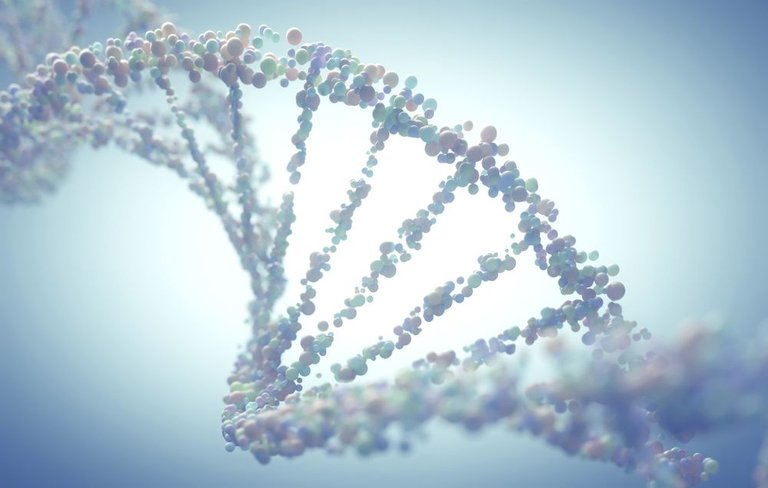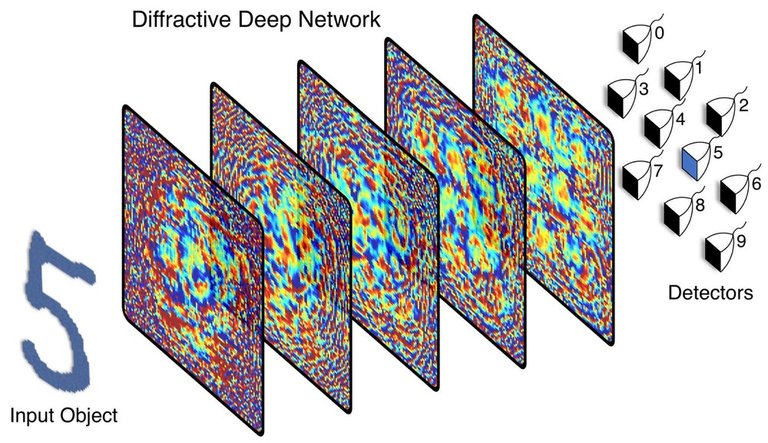Evaluation of a Remote Diagnosis Imaging Model vs Dilated Eye Examination in Detecting Macular Degeneration | Diabetic Retinopathy | JAMA Ophthalmology | JAMA Network
ADVANCES IN MEDICINE
JUST WHAT THE DOCTOR ORDERED:
IMPROVING PATIENT CARE WITH AI
Artificial Intelligence is transforming the world of medicine. AI can help doctors make faster, more accurate diagnoses. It can predict the risk of a disease in time to prevent it. It can help researchers understand how genetic variations lead to disease.
Although AI has been around for decades, new advances have ignited a boom in deep learning. The AI technique powers self-driving cars, super-human image recognition, and life-changing—even life-saving—advances in medicine.
Deep learning helps researchers analyze medical data to treat diseases. It enhances doctors’ ability to analyze medical images. It’s advancing the future of personalized medicine. It even helps the blind “see.”
“Deep learning is revolutionizing a wide range of scientific fields,” said Jensen Huang, NVIDIA CEO and co-founder. “There could be no more important application of this new capability than improving patient care.”
Three trends drive the deep learning revolution: more powerful GPUs, sophisticated neural network algorithms modeled on the human brain, and access to the explosion of data from the internet (see “Accelerating AI with GPUs: A New Computing Model”)
Community Medicine is a term used to describe medical conditions in a large population setting. It often involves the screening of large groups to select those with disease and provide appropriate treatment to avoid further complications. This involves an examination of large groups of patients. Often more than 100 persons will be examined with a positive finding of less than five in one hundred examinations. This is a massive undertaking when screening perhaps as much as 1000 or more persons. It is often not cost effective.
However, the development of image analysis, high-speed computing power, and deep learning machines can be trained to accomplish this task. Algorithms can be developed to digitize images (x-rays, CT scans, and photographs.

Artificial intelligence or machine learning is bringing a new powerful tool for rapid interpretation of medical images, such as chest x-rays, retinal fundus photography, and scans. Images of the skin can be analyzed for suspicious moles to rule out malignant melanoma rapidly. As the science matures there are sure to be significant cost savings as well as time.
Machine learning is dependent upon large data stores, and accuracy improves as images are added and curated by human beings (physicians). It is doubtful if AI will ever stand alone without human oversight.
A study of retinal fundus evaluation (as reported JAMA) using machine learning showed
Remote diagnosis imaging and a standard examination by a retinal specialist appeared equivalent in identifying referable macular degeneration in patients with high disease prevalence; these results may assist in delivering timely treatment and seem to warrant future research into additional metrics.
The study has shown equivalency in diagnosing age-related macular degeneration using ocular coherence tomography.
The use of deep learning has also been applied in dermatology to screen for malignant melanoma or other skin malignancy.
As radiology is inherently a data-driven specialty, it is especially conducive to utilizing data processing techniques. One such technique, deep learning (DL), has become a remarkably powerful tool for image processing in recent years. In this work, the Association of University Radiologists Radiology Research Alliance Task Force on Deep Learning provides an overview of DL for the radiologist. This article aims to present an overview of DL in a manner that is understandable to radiologists; to examine past, present, and future applications; as well as to evaluate how radiologists may benefit from this remarkable new tool. We describe several areas within radiology in which DL techniques are having the most significant impact: lesion or disease detection, classification, quantification, and segmentation.

Some are concerned that AI, or deep learning may replace human radiologists, however, this is unlikely to occur. But deep learning won’t be replacing radiologists anytime soon, Bratt explained, and one key reason for this is that deep neural networks (DNNs) are naturally limited by “the size and shape of the inputs they can accept.” But deep learning won’t be replacing radiologists anytime soon, Bratt explained, and one key reason for this is that deep neural networks (DNNs) are naturally limited by “the size and shape of the inputs they can accept.” A DNN can help with straightforward tasks reliant on a few images—bone age assessments, for instance, but they become less useful as the goal grows more and more complex. This limitation, Bratt explained, is related to the concept of long-term dependencies. Another issue related to DNNs is how easily they can fall apart when introduced to small changes. A DNN can be working perfectly after being trained on one institution’s dataset, for instance, but its performance suffers when it is introduced to new data from a new institution.
“This again reflects the fact that ostensibly trivial, even imperceptible, changes in input can cause catastrophic failure of DNNs, which limits the viability of these models in real-world mission-critical settings such as clinical medicine,” Bratt wrote.
In addition to evaluating images, DNN can be applied to other tasks.
MINING MEDICAL DATA FOR BETTER, QUICKER TREATMENT
Medical records such as doctors' reports, test results and medical images are a gold mine of health information. Using GPU-accelerated deep learning to process and study a patient's condition over time and to compare one patient against a larger population could help doctors provide better treatments.
BETTER, FASTER DIAGNOSES
Medical images such as MRIs, CT scans, and X-rays are among the most important tools doctors use in diagnosing conditions ranging from spine injuries to heart disease to cancer. However, analyzing medical images can often be a difficult and time-consuming process.
Researchers and startups are using GPU-accelerated deep learning to automate analysis and increase the accuracy of diagnosticians:
Imperial College London researchers hope to provide automated, image-based assessments of traumatic brain injuries at speeds other systems can't match.
Behold.ai is a New York startup working to reduce the number of incorrect diagnoses by making it easier for healthcare practitioners to identify diseases from ordinary radiology image data.
Arterys, a San Francisco-based startup, provides technology to visualize and quantify heart flow in the body using an MRI machine. The goal is to help speed diagnosis.
San Francisco startup Enlitic analyzes medical images to identify tumors, nearly invisible fractures, and other medical conditions.
GENOMICS FOR PERSONALIZED MEDICINE
Genomics data is accumulating in unprecedented quantities, giving scientists the ability to study how genetic factors such as mutations lead to disease. Deep learning could one day lead to what’s known as personalized or “precision” medicine, with treatments tailored to a patient’s genomic makeup.
Although much of the research is still in its early stages, two promising projects are:
A University of Toronto team is advancing computational cancer research by developing a GPU-powered “genetic interpretation engine” that would more quickly identify cancer-causing mutations for individual patients.
Deep Genomics, a Toronto startup, is applying GPU-based deep learning to understand how genetic variations lead to disease, transforming personalized medicine and therapies.
DEEP LEARNING TO AID BLIND PEOPLE
Nearly 300 million people worldwide struggle to manage such tasks as crossing the road, reading a product label, or identifying a face because they’re blind or visually impaired. Deep learning is beginning to change that.
Horus Technology, the winner of NVIDIA’s first social innovation award at the 2016 Emerging Companies Summit, is developing a wearable device that uses deep learning, computer vision, and GPUs to understand the world and describe it to users.
One of the early testers wept after trying the headset-like device, recalled Saverio Murgia, Horus CEO, and co-founder. “When you see people get emotional about your product, you realize it’s going to change people’s lives.”
Further DNN utilizes optical diffractive circuits in lieu of electrons

The setup uses 3D-printed translucent sheets, each with thousands of raised pixels, which deflect light through each panel in order to perform set tasks. By the way, these tasks are performed without the use of any power, except for the input light beam.
The UCLA team's all-optical deep neural network – which looks like the guts of a solid gold car battery – literally operates at the speed of light and will find applications in image analysis, feature detection, and object classification. Researchers on the team also envisage possibilities for D2NN architectures performing specialized tasks in cameras. Perhaps your next DSLR might identify your subjects on the fly and post the tagged image to your Facebook timeline. For now, though, this is a proof of concept, but it shines a light on some unique opportunities for the machine learning industry.
Dewinner of NVIDIA’s first social innovation award at the 2016 Emerging Companies Summit, is developing a wearable device that uses deep learning, computer vision, and GPUs to understand the world and describe it to users.
One of the early testers wept after trying the headset-like device, recalled Saverio Murgia, Horus CEO and co-founder. “When you see people get emotional about your product, you realize it’s going to change people’s lives.”
Evaluation of a Remote Diagnosis Imaging Model vs Dilated Eye Examination in Referable Macular Degeneration | Diabetic Retinopathy | JAMA Ophthalmology | JAMA Network: This study evaluates a retinal diagnostic device and compares its utility and outcomes with those of traditional eye examinations by retinal specialists for patients with potential retinal damage from diabetic retinopathy and age-related macular degeneration.
Source
Plagiarism is the copying & pasting of others work without giving credit to the original author or artist. Plagiarized posts are considered spam.
Spam is discouraged by the community, and may result in action from the cheetah bot.
More information and tips on sharing content.
If you believe this comment is in error, please contact us in #disputes on Discord
Hi! I am a robot. I just upvoted you! I found similar content that readers might be interested in:
https://digitalhealthspace.blogspot.com/